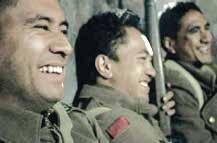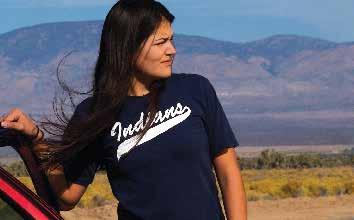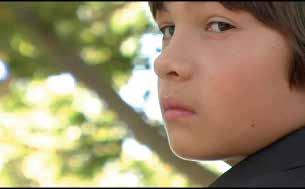
21 minute read
Saturday, Oct. 20
Saturday 11am - 1pm | OCT. 20 CHILDREN’S PROGRAM Al Green Theatre
Bizou and the Wonderful World of Animals Amy Goes to Wadjemup Island
Advertisement
Bizou and the Wonderful World of Animals Director: Jerry Thevenet Canada, 24:00, 2007, Beta SP
World Premiere
Hear stories, learn words in Aboriginal languages, and have tons of fun with Bizou!
Jerry Thevenet is a Labrador Métis filmmaker who has created a large body of work as a writer, director, and producer.
Maq and the Spirit of the Woods Director: Phyllis Grant Canada, 8.30, 2006, Beta SP
Toronto Premiere
An animated tale of a young boy who shares an adventure with the Spirit of the Woods.
Phyllis Grant (Mi’qmaq) is a rap/spoken-word artist and beat composer from the Pabineau First Nation in New Brunswick. She is also known by the alias MO3.
Amy Goes to Wadjemup Island Director: Denise Groves Australia, 8:20, 2006, Beta SP
Noongar and English with English subtitles
International Premiere
On a visit with her Gran, young Amy discovers a magical connection to Wadjemup Island and joins in her family’s reflections of their history there.
Published author and lecturer Denise Groves is the program chair for Australian Indigenous Studies at Murdoch University in Western Australia. This is her first film.
Aydaygooay Director: Mary Code Canada, 5:55, 2007, Beta SP
Ontario Premiere
Images of the barren tundra are beautifully woven with animation to tell the Sayisi Dene legend of how Aydaygooay brought the caribou back to his people.
Mary Code is from the Sayisi Dene First Nation in northern Manitoba. Aydaygooay won the Made in the Yukon award at the 2007 Dawson City International Short Film Festival.
Co-presented by

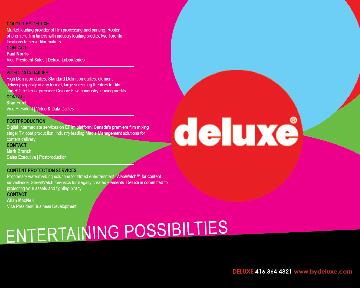
Two Spirited (First Stories) Jinna Mit Inu Barnunga (Footprints In Sand)
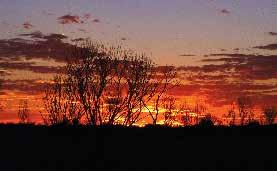
First Stories: Volume III - Two Spirited Director: Sharon A. Desjarlais Canada, 6:47, 2007, Beta SP
A Two-Spirited Jingle Dress dancer emerges from controversy with dignity and the respect of her community.
Sharon A. Desjarlais is a Cree, Métis, and Ojibway filmmaker who has been involved with media production since 2001.
Amalgamation: beyond gender Director: Marcella Ernest USA, 4:00, 2007, Beta SP
North American Premiere
A collage of traditional culture, sexuality, and love beyond gender.
English/Navajo/Anishnabe filmmaker Marcella Ernest’s previous films include Spider Kid and Red Nation Motorcycle Clubs.
Footprints In Sand (Jinna Mit Inu Barnunga) Director: Glen Stasiuk Australia, 26:00, 2007, Digital Beta
International Premiere
In English and Martu with English subtitles
Footprints in the Sand tells the extraordinary story of Warri and Yatungka, a couple whose powerful for each other was forbidden by Wiluna tradiotnal law. Unable to resist their love, they left their community and went into self-imposed exile, living alone in an extremely remote location in the Gibson Desert. The story of the attempt to rescue them during an extreme drought is told by their son, Yullala
WASA Award winning director of the documentary The Forgotten, Glen is a maternal descendent of the Minang-Wadjari Nyungars (Aboriginal peoples) of the South - West of Western Australia. His paternal family immigrated from post-war Russia. Current works include a new film: Noongar of the Beeliar (Swan River) and Weewar.
Destiny in Alice Director: Sonja Dare Canada, 26:34, 2007, Digital Beta
Ontario Premiere
The harsh red desert environment of Alice Springs, Australia is anything but barren – welcome to the lesbian metropolis of the outback. This revealing and satirical documentary delves into the matters of the heart and the complexities of cross-cultural relationships within this thriving community.
Aboriginal Australian Sonja Dare is a writer/director whose credits include Cool Drink and Culture and Snake Dreaming, both for the Central Australian Aboriginal Media Association (CAAMA) Productions.
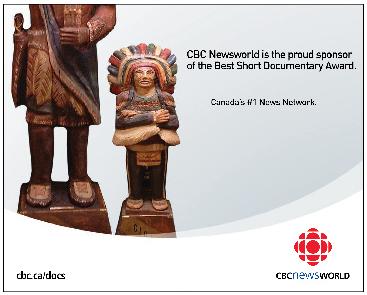

In the Land of the War Canoes
The Double Entendre of Re-enactment: An Interactive Program By Gerald McMaster
Re-enactments are now becoming ever-more popular with contemporary artists, none more so than Native contemporary artists. In this program, filmmakers and artists who use re-enactment as a form of entertainment, historiography and identity will be presented in a public lecture.
The idea of re-enactment has its roots as far back or further as the American artist George Catlin (1796-1872), who in the 1840s was among the first to take Native performers (or, “show Indians”) to such European cities as London and Paris. He called these re-enactments of Native life tableaux vivants. Though he began by using non-Native performers, he ended up using real Native Americans, who performed for such luminaries as Queen Victoria and Prince Albert. Catlin’s shows were primarily lectures to promote his book. The entertainer extraordinaire, however, who in the 1880s and 1890s created the Wild West Show, a program that was about re-enactments, was none other than the American William F. “Buffalo Bill” Cody (1846-1917). He first staged his re-enactments in the United States then eventually to all parts of Europe. Cody made it a policy to always employ Native Americans. Also at the turn of the 20th century, beginning around 1904 until the early 1920s, the Hiawatha Pageant Plays played a role in the construction of an essentializing “Indianness” that was played out for tourists. The famed photographer Edward S. Curtis (1868-1952), who made it his passion and life’s work to photograph the Native American, wrote and directed in 1914 a film called In the Land of the Head Hunters. Filmed in British Columbia, Curtis spent three years photographing the Kwakwaka’wakw re-creating their way of life prior to contact. In the 1920s, American filmmaker Robert Flaherty (1884-1951) travelled to the Arctic Quebec community of Inukjuak where he shot Nanook of the North. Flaherty wanted to show the Inuit in a primitivist way, a kind of anti-modern way that was so typical of ethnography of the time, a people untouched by Europeans. The period between 1850 and 1950 was a brutal time in the history of Native peoples across North America. While governments were enacting policies of aggressive civilization on all Aboriginal people, museums were re-enacting the failed promise of an authentic Indian through their displays of historicized dramas of their own making.
Re-enactments of an Aboriginal other served to create a utopian space in a mythic past and remain a powerful metaphor. None more so than the hundred or so “Indian clubs” active in Germany and other parts of Europe today, who trace their remote origins to waves of interest created by carnivals, Wild West shows, and the German author Karl May. May’s writings also engendered a genre of film in the 1960s rarely seen on this side of the ocean that were based on his novels and central character Winnetou, the Apache hero who symbolized the romantic desire to live a “Native” life in close contact with nature.
For contemporary artists, on the other hand, the difficulty in re-enacting the stereotype hinges on the absurd, which they acutely address through the strategy of humour – something that is rarer in the works of historic non-Native artists. Performance artist James Luna uses humour in an oblique way to get at serious issues, such as racial stereotyping and the commodification of Native cultures. Two artists who have been inspired by the work of George Catlin are Native Canadian artist Kent Monkman and the French artist Orlan. New York-based photographers Andrea Robbins and Max Becher, in their series German Indians, followed European hobbyists seeing them as takeoffs on the works of Edward Curtis and Karl May. New York-based photographer Edie Winograde 1999 series Place and Time uses re-enactments to explore American history through staging historical incidents such as the famous Battle of Little Big Horn. Acclaimed Inuit director Zacharias Kunuk has filmed similar scenes as Flaherty, yet is highly aware of his primary Inuit audiences, therefore initiating an entirely different outcome through his re-enactments. Other young Native artists making films in which re-enactment is a central driving theme include Dustinn Craig and Shonie De La Rosa.
In the end, we may be able to view the work of non-Native artists and filmmakers with the same sympathy they showed their Native American friends of which they were passionate enthusiasts. Like many others in succeeding generations, the colonial directors of re-enactments of Native people and cultures attempted to create a utopian paradise in their quest for an ancient past. Contemporary artists on the other hand, use re-enactments in far more subversive ways. Yet, for everyone involved in re-enactments, the process is transformative, for it allows us to momentarily step into a real or imagined past through a political or cultural lens, never the historiographic route.
Co-presented by
Shooting Geronimo

Shooting Geronimo Director: Kent Monkman Canada, 11:00, 2007, Beta SP
Set in a ghost town in the old west, two buff young Cree men derail the contrivances of 19th-century filmmaker Frederick Curtis.
Kent Monkman is an artist of Cree ancestry who works with a variety of mediums, including painting, film, video, and performance. Recent solo shows have been mounted in Ontario at the Hamilton Art Gallery and the Museum of Contemporary Canadian Art. Monkman has participated in recent group shows at the Musée d’Art Contemporain de Montréal, the Heard Museum in Phoenix, Arizona, and at Compton Verney, in Warwickshire, England. Monkman has created site-specific performances at the McMichael Canadian Art Collection, and at Compton Verney. His performance-based films have been screened at various national and international festivals, including both the Berlin and Toronto international film festivals. His work is represented in the collections of the National Gallery of Canada, Museum London, the Musée d’Art Contemporain de Montréal, the Woodland Cultural Centre, the Indian Art Centre, The Mackenzie Art Gallery, and the Canada Council Art Bank.
The Last Great Hunt Director: Shonie De La Rosa USA, 6:00, 2006, Beta SP
This comedic short presents a series of stereotypes culled from cinematic depictions of Native North Americans. “Mr. Indigenous” stalks all manner of prey, from bunny rabbits to “cowboys,” parodying tropes of the Native as noble warrior at-one-with-nature.
Shonie De La Rosa (Navajo) has made many films over the years and continues to cross the boundaries of filmmaking with his subject matter and style. His last film Mile Post 398 has screened at festivals internationally.
The Last Great Hunt
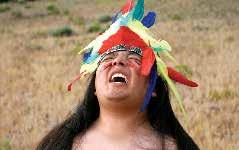
Nanook of the North Director: Robert Flaherty USA/France, 79 mins (5-minute excerpt), 1922, Beta SP
Cited as the first film of the documentary genre, Nanook of the North “documents” a year in the life of an Inuit hunter Nanook and his family. Using text panels and lively music (the film is silent), Flaherty presents a glimpse into daily “pre-contact” life in the Arctic: trading, hunting, fishing, sledding and igloo building.
Robert Joseph Flaherty (1884-1951) is considered one of the foundational figures of documentary filmmaking. Born in Michigan, he began his career as a miner, prospector and explorer in northern Canada. It was there that Flaherty began making films about the Inuit peoples he encountered. Early experiments led to his 1922 feature film Nanook of the North, which was both a critical and commercial success and greatly influenced the genre of documentary filmmaking.
In the Land of the War Canoes Director: Edward Curtis USA, 47:00 (5-minute excerpt) 1972 (originally released as In the Land of the Head-Hunters, 1914), Beta SP
Originally titled In the Land of the Head-Hunters, Edward Curtis’ film strives to recreate the way of life of the Kwakiutl peoples of Vancouver Island prior to contact. Massive war canoes, totem poles, and elaborate costumes animate a story that contains all of the elements of a Hollywood movie: unrequited love, betrayal, revenge and battle.
Edward Sheriff Curtis (1868-1952) is best known for his photographs of the American West and of Native American peoples. From 1906-1930, Curtis photographed over 80 tribes in his 40 volume encyclopedic series The North American Indian. With the patronage of banker JP Morgan and President Roosevelt, Curtis aimed not only to photograph, but to document traditional Native American life, faced with the believed threat of its extinction.
4-Wheel War Pony Winnetou
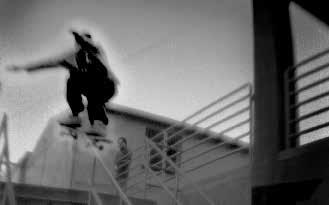
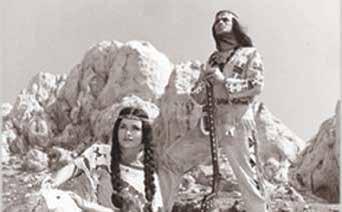
The Shadow Catcher Director: Teri C. McLuhan USA, 88:00 (5-minute excerpt), 1974, Beta SP
The Shadow Catcher retraces photographer Edward Curtis’s journeys from the pueblo regions of the Southwest, north to British Columbia and Alaska, using re-creations of events from his source materials: unpublished journals, field notes, private letters and all of Curtis’s recoverable film footage of the trip.
The daughter of theorist/philosopher Marshall McLuhan, Teri C. McLuhan is a writer and filmmaker based in New York City. Her books, which deal with themes of nature and the human psyche across cultures and history, include Dream Tracks: The Railroad and The American Indian 1890-1930 (1985) and The Way of the Earth: Encounters with Nature in Ancient and Contemporary Thought (1995). She has produced two films, The Shadow Catcher (1974), and The Third Walker (1978).
Nunavut (Our Land) Episode 9: Aiviaq Walrus Director: Zacharias Kunuk Producer: Isuma Productions Canada, 28:00, 1995, Beta SP
Igloolik, Summer 1946. The distant sound of the atookatookatook, the first gas engine to arrive in Igloolik, brings a surprise visitor to Qaisut, island of the walrus hunters. The Priest arrives to study Inuit life, to dig in the ancient ruins and to see the hunt.
Igloolik Isuma Productions, Inc. was incorporated in January 1990 as Canada’s first Inuit independent production company. Isuma is 75% Inuit-owned. The founding shareholders are Zacharias Kunuk (President), Paul Apak Angilirq (VicePresident), Pauloosie Qulitalik (Chairman), and Norman Cohn (Secretary-Treasurer). Paul Apak passed away in December 1998. Isuma’s headquarters are in Igloolik, Nunavut, with a southern office in Montreal. Isuma has produced the internationally acclaimed Atanarjuat: The Fast Runner (winner of the Cannes Palme D’Or) and The Journals of Knud Rasmussen.
Winnetou Director: Harald Reini Writers: Karl Many, Harald G. Petersson West Germany/Yugoslavia/Italy, 101:00 (5-minute excerpt), 1965, Beta SP
This is the first of sixteen film adaptations of Karl May’s popular German “wild west” novels. German survey engineer Old Shatterhand (Lex Barker) is saved from certain death by Apache warrior Winnetou (played by French film star Pierre Brice), and the two become blood brothers. Karl May is the best-selling German writer of all time, best known for his turn-of-the-century Wild West novels set in the American West. Over 200 million copies of May’s books have been circulated worldwide, and have been translated into more than thirty different languages.
While May often intimated that his life was the inspiration for his books, he never actually traveled to the American West. May has been immortalized in annual Karl May festivals held across Europe.
4-Wheel War Pony Director: Dustinn Craig USA, 5:00, 2007, Beta SP
Toronto Premiere
The Apaches of the 1880s absorbed modernity, yet they managed to continue refining and retaining their life way; so too are today’s White Mountain Apache. 4-Wheel War Pony is a short film utilizing skateboarding footage captured by core members of the White Mountain Apache in an effort to document culture in motion.
Dustinn Craig grew up in Arizona, living in White River on the Fort Apache reservation and later in Window Rock on the Navajo Reservation. His career as a multimedia producer and director began as a teenager, making skateboard videos of himself and friends. In 1998, Craig started BetterOnes Productions with his wife, Velma Craig, directing and producing works that reflect on family and tribal ties. Craig has been skateboarding for over twenty years.
Curator Bio: Gerald McMaster

Gerald McMaster, since 2005, has been the Curator of Canadian Art at the Art Gallery of Ontario in Toronto, where he is leading his curatorial team in the reinstallation of the Canadian galleries. From 1981 to 2000 he was Curator at the Canadian Museum of Civilization, in charge of exhibitions, acquisitions, and publications of contemporary Indian art. He later became Curator-in-Charge of the First Peoples Hall from 1995 to 2000. While with the Canadian Museum of Civilization, he curated some of the most important exhibitions in our history, including Indigena (1992), Reservation X (1998), and Edward Poitras: Canada XLVI Biennale di Venezia (1995). These exhibitions were always at the forefront of establishing a critical and articulate voice for Aboriginal artists in the art world. In 2000 he left Ottawa for Washington to work at the Smithsonian’s National Museum of the American Indian where he was the both the Director’s Special Assistant for Mall Exhibitions (2002- 2004) and Deputy Assistant Director for Cultural Resources (2000-2002). During his tenure at the Smithsonian he was responsible for design and content of Museum’s new permanent exhibitions, as well as curating First American Art and New Tribe: New York. He is widely published and has received our country’s highest awards, including: the 2001 ICOM-Canada Prize for contributions to national and international museology; the 2005 National Aboriginal Achievement Award; and more recently, the Order of Canada. Gerald is originally from Saskatchewan.
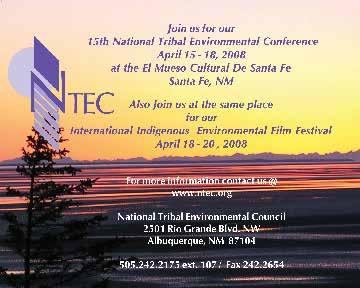
Soy Pedro; Somos Mixteco The Vanishing Trace

Nikamowin (Song) Director: Kevin Lee Burton Canada, 11:30, 2007, Beta SP
English & Cree with English subtiltles
World Premiere
A thought-provoking and visually beautiful short that transforms a Cree narrative into a linguistic soundscape.
Kevin Lee Burton is a Swampy Cree filmmaker from God Lake’s Narrow’s, Manitoba. Kevin won The Cynthia LickersSage Award for Emerging Talent at the 2005 imagineNATIVE Festival.
Soy Pedro; Somos Mixteco (I am Pedro; We are Mixteco) Director: Cedar Sherbert USA, 19:00, 2007, Beta SP
Spanish and Mixteco with English subtitles
Toronto Premiere
Soy Pedro is a moving portrait of a Oaxacan man who immigrates to the United States to become a fruit picker and activist.
Cedar Sherbert is a Kumeyaay filmmaker whose previous works include Gesture Down (I Don’t Sing) and Memory.
The Vanishing Trace Director: Keesic Douglas Canada, 10:00, 2007, Beta SP
World Premiere
An intimate search for Aboriginal identity in the modern world takes a confessional tone in this beautifully crafted short.
Keesic Douglas (Ojibway) is a photographer and filmmaker from the Mnjikaning First Nation in Ontario. His film Rezurrection screened at imagineNATIVE in 2006.
Heaven’s Fiddle Director: Willis Petti Canada, 2:32, 2007, Beta SP
World Premiere
Young fiddle player Brayana Petti’s moving ode to her late grandfather.
Willis Petti (Dene) is a self-taught filmmaker from Winnipeg. His series of dude films have screened at imagineNATIVE in 2005 and 2006.

Gene Boy Came Home Wabak

Writing the Land Director: Kevin Lee Burton Canada, 7:40, 2007, Beta SP
English and Hunkamenum with English subtitles
World Premiere
Musqueam elder Larry Grant reveals his story of losing and then reconnecting with his heritage, land and language in this elegant short.
Kevin Lee Burton is a Swampy Cree filmmaker from God Lake’s Narrow’s, Manitoba. Kevin won The Cynthia LickersSage Award for Emerging Talent at the 2005 imagineNATIVE Festival.
Gene Boy Came Home Director: Alanis Obomsawin Canada, 24:37, 2007, 35mm
This portrait of Eugene Benedict (Gene Boy) is a harrowing account of one survivor’s journey from the Odanak Reserve to the frontlines of the Vietnam War at the age of 17. This compelling documentary captures a turbulent era in world history, the personal scars left by war, and the powerful resonance of home.
Alanis Obomsawin (Abenaki) is one of Canada’s most distinguished documentary filmmakers and has been making uncompromising films for almost 40 years. She has been made a member of the Order of Canada and has been recognized with numerous awards and honours.
Wabak Director: Kevin Papatie & Gilles Penosway Canada, 6:57, 2006, Beta SP
Algonquin with English subtitles
A young child plays in the wilderness as an anti-alcohol fable is whispered over captivating handheld camerawork in this haunting and original short.
Kevin Papatie and Gilles Penosway are Algonquin filmmakers from the Kitcisakik community in Abitibi Quebec. Wabak is their first film.
Co-presented by
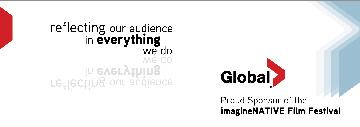


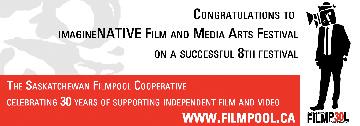

Saturday 7pm - 9pm | OCT. 20 ELIJAH: FEATURE PRESENTATION Al Green Theatre
Elijah
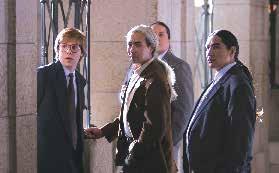
Elijah Director: Paul Unwin Producer: Lisa Meeches (Eagle Vision Productions) & Anagram Pictures Canada, 88:00, 2007, HD Cam
English and Cree with English subtitles
In this utterly unique bio-pic, Elijah Harper goes from being a shy politician in Manitoba to the voice of a people when he stands against the Meech Lake Accord in 1990. Told with a surprising combination of heart and humour, Elijah balances drama and comedy to create an entertaining portrait of Harper, one of the first Aboriginal politicians in Canada. Billy Merasty commands the screen with his light, but heartfelt portrayal of Harper, with help from the all-star supporting cast that includes Gary Farmer, Lorne Cardinal, Maury Chaykin, Glen Gould and Gabrielle Miller. Unexpectedly funny, Elijah is a fresh take one of the key figures in recent Canadian history.
Paul Unwin is a veteran television writer and director. Lisa Meeches is President of Eagle Vision Productions.
Maori Boy

Presented by
66 Maori Boy Director: Mike Jonathan Australia, 3:30, 2007, Beta SP
World Premiere
A young Maori man walks through life, battling stereotypes about Maori people and trying to find his own path.
Mike Jonathan is a Maori film and television director whose short film, Hawaikii, won Best Short Drama at imagineNATIVE in 2006.
Round Round Round Director: Christopher Markowski Producer: Donna Kay Canada, 4:16, 2006, Beta SP
A vividly colourful music video offers glimpses into the world of the powwow.
Producer Donna Kay (Métis) is an award-winning musician whose most recent album The Journey was nominated for four 2006 Canadian Aboriginal Music Awards.
Peili (Mirror) Director: Mikkal Morottaja Finland, 4:00, 2007, Beta SP
Canadian Premiere
AMOC looks at his life and tries to understand what it is to be a young, urban Sámi man.
Mikkal Morottaja is a Sámi rapper who performs in his language. This year, he was named Finland’s Young European of the Year.
Commercial Drive

In Innu
Ontario Premiere
A story of unity and modern ideals on the rez set to a driving rhythm in this catchy music video.
The directors are part of the Wapikoni Mobile Media team.
Postcards of Real Worlds Director: Annabel Wong USA, 3:00, 2006, Digital Beta
Canadian Premiere
A young warrior takes aim with his longbow to the melodic sounds of Brooklyn-based band The Dust Dive.
Annabel Wong (Salt River Pima) is an emerging filmmaker based in Brooklyn, New York.
Commercial Drive Director: Laura J. Milliken Canada, 3:45, 2006, Beta SP
A stylish dedication to the notorious Vancouver neighbourhood through the eyes of hip hop artist MANIK.
Laura J. Milliken (Chippewa) is an accomplished producer and co-founder of Big Soul Productions. She has produced numerous award-winning programs, short films and music videos including the Gemini-nominated dramatic series Moccasin Flats.
Tcotapinen Director: Simon Chachai and Justin Chachai Canada, 4:05, 2006, Beta SP
In Atikamekw
Ontario Premiere
Tcotapinen is a beautiful and inventive music video that combines black and white photography and animation in an emotional exploration of suicide and healing.

theBeat
Standard Radio Presents: The Beat featuring DiggingRoots, Leela Gilday and Guests Hard Rock Café, Yonge-Dundas Square 279 Yonge St. Admission: $5 or FREE with a Festival Pass or ticket stub

DiggingRoots Juno-nominated recording artists DiggingRoots, are quickly emerging as new leaders of the old school of rebel music. From the first listen, the songs about culture, freedom, and identity are undeniably hard-hitting, hopeful and honest. The songwriting team combine the elements of traditional Indigenous influences, hip-hop, folk, reggae, blues, and roots with an uncommon eclectic sensibility. Raven Kish and Shoshona Kanatakta bring us lyrics that take no prisoners and embrace the art of possibility. These stories are from the end of the road.
Leela Gilday Juno-award winner Leela Gilday was born and raised in Yellowknife, Northwest Territories. She is a singer/songwriter from the Dene Nation whose songwriting reflects her northern roots. She sings about identity, death, love and life from the urban Indian perspective. Her unbound and naturally powerful voice transports listeners to a world where freedom and joy balance sorrow and injustice, making you cry and laugh in the same breath.
Gary Farmer & the Troublemakers Gary Farmer and the Troublemakers of New Mexico, are comprised of talented, experienced Native American musicians. Lead by well-known Six Nations actor Gary Farmer, The Troublemakers have reinterpreted blues standards and are taking the Native music industry by storm in the short time they have been together.





